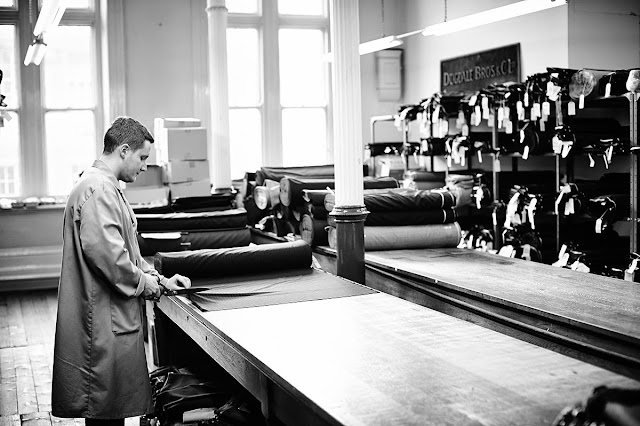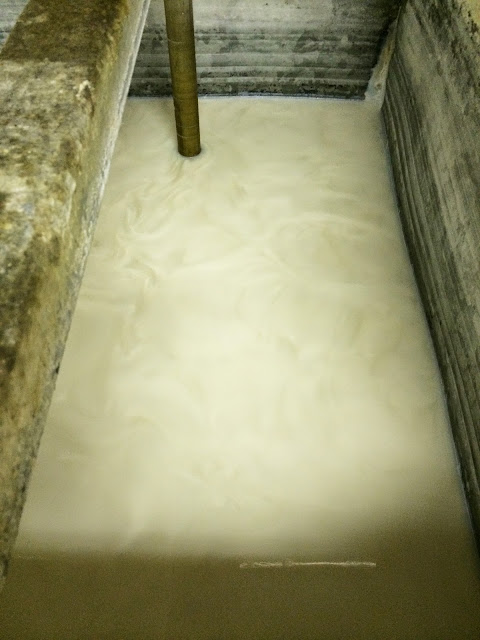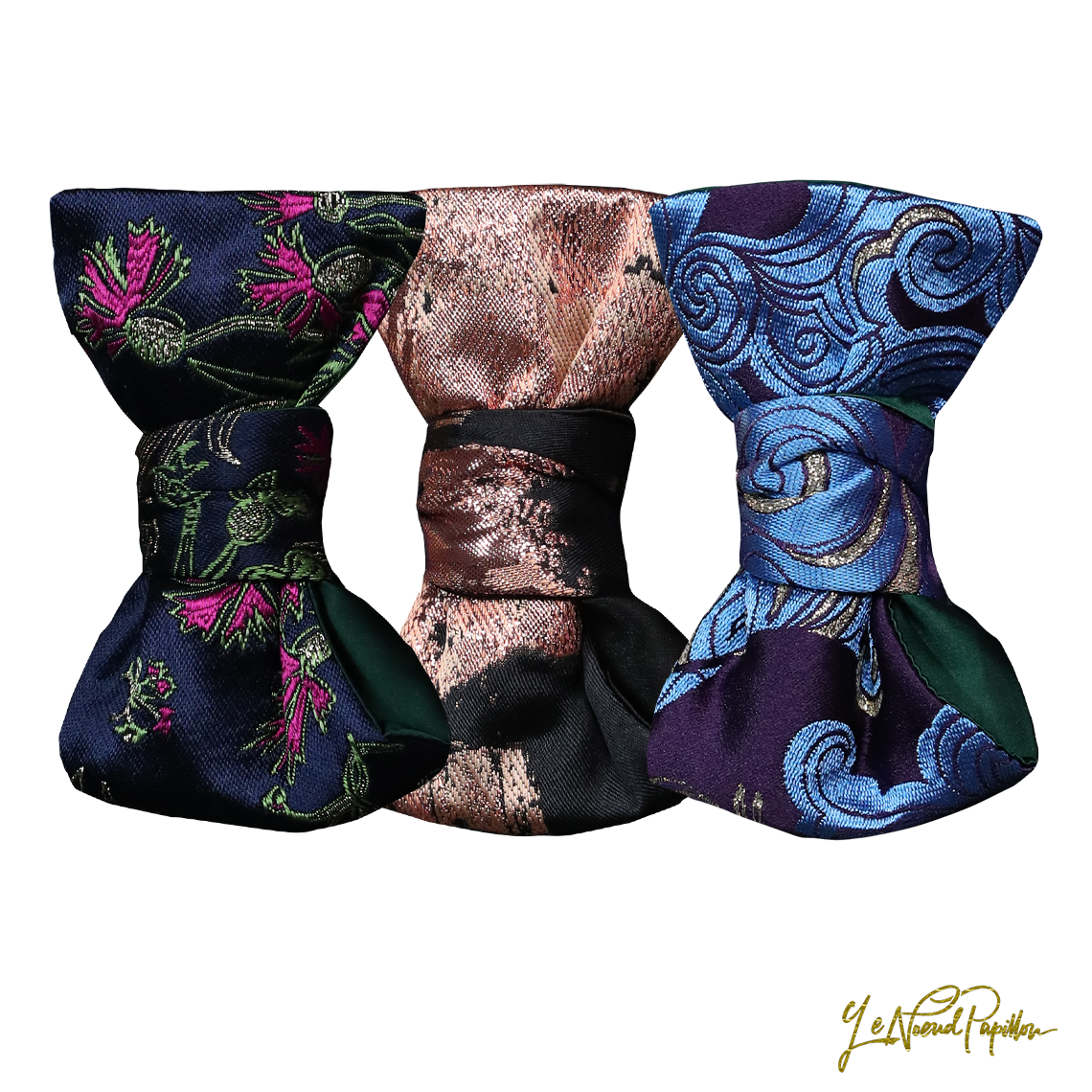Given that I have been at this game for less than a decade I am extraordinarily grateful that companies like Dugdale Bros., that has been going for over a century, will take time out to share knowledge with our readers. Dugdale Bros. was introduced to me by a Sydney tailor who once had a shop on William Street in Paddington, Sydney. Most of us knew of brands like Dormeuil, Holland & Sherry and Scabal, who all kept agents in Australia, but Dugdale Bros. was one of the more enigmatic cloth companies from Huddersfield that very few knew about back then. It would be wonderful if the original Dugdale brothers; Henry, Percy and Frederick, were given a chance to walk the earth again and to see what advances had come in cloth and what had happened to their company which had been founded in 1896. Today Dugdale Bros still provides wool cloth (merino, cashmere and mohair blends) both to luxury brands such as LVMH and Ralph Lauren as one aspect of their business and a bunch service to tailors in another. Robert Charnock from Dugdale Bros. took time out to answer a few questions on wool cloth and its production.

The desire to own a made to measure or bespoke suit seems to have had an marked jump in interest the last 6 years – has this had a noticeable effect on the sale of wool in bunches by companies such as yourselves?
We have noticed over the last 10 years or so a marked increase in interest in all things made to measure and bespoke and a whole new generation of consumer being drawn to the endless options in cloth and style afforded by opting to have garments made to their requirements.
A lot of this I feel has been driven, ironically, by the dress down era. I think confusion reigned when men were given dress down at work as an option as they went far too casual. In many cities there was a retrenchment back into the safety of suits. I now see the dawn of a new tailored dress down era where sports jackets and blazers have again become an important part of a gentleman`s wardrobe and men are opting for lighter Navy and Grey rather than the starchy old charcoal Grey and dark Navy.
Blogs and forums mean a new audience of young consumer is well educated before he makes his first purchase.
We have seen our sales to made to measure and bespoke customers grow in all developed and developing markets, gathering pace in the last few years. Tailoring is becoming significant even in more casual wear with men teaming tailored tweed jackets with jeans and in the most formal of arenas such as weddings the bespoke suit has become king over traditional tails, vest and morning trousers.
We at Dugdale have been very fortunate in the resurgence of interest in English cloth as it is perfect for bespoke garments. It has been recognised in the various chat rooms that English cloth because of the way it is constructed allows the tailor to be more expressive and the end result is sharper more robust tailoring with the added bonus of longevity.

 |
| Robert Charnock Of Dugdale Bros. |
The desire to own a made to measure or bespoke suit seems to have had an marked jump in interest the last 6 years – has this had a noticeable effect on the sale of wool in bunches by companies such as yourselves?
We have noticed over the last 10 years or so a marked increase in interest in all things made to measure and bespoke and a whole new generation of consumer being drawn to the endless options in cloth and style afforded by opting to have garments made to their requirements.
A lot of this I feel has been driven, ironically, by the dress down era. I think confusion reigned when men were given dress down at work as an option as they went far too casual. In many cities there was a retrenchment back into the safety of suits. I now see the dawn of a new tailored dress down era where sports jackets and blazers have again become an important part of a gentleman`s wardrobe and men are opting for lighter Navy and Grey rather than the starchy old charcoal Grey and dark Navy.
Blogs and forums mean a new audience of young consumer is well educated before he makes his first purchase.
We have seen our sales to made to measure and bespoke customers grow in all developed and developing markets, gathering pace in the last few years. Tailoring is becoming significant even in more casual wear with men teaming tailored tweed jackets with jeans and in the most formal of arenas such as weddings the bespoke suit has become king over traditional tails, vest and morning trousers.
We at Dugdale have been very fortunate in the resurgence of interest in English cloth as it is perfect for bespoke garments. It has been recognised in the various chat rooms that English cloth because of the way it is constructed allows the tailor to be more expressive and the end result is sharper more robust tailoring with the added bonus of longevity.
 |
| Cloth being assessed for quality and handle at Dugdale Bros. |
 |
| Dugdale Bros. offers a cut length service for tailors. |
 |
| The cutter preparing lengths to be shipped to tailors. |
Wool seems to be having a kind of renaissance with customers demanding brighter colours, weaves and in some instances I have seen companies screen printing onto wool – how does the consumer shape your bunches each year and how do you attempt to meet what the market demands each year? Or, more importantly, how much time to you spend in developing seasonal bunches as opposed to staples?
In terms of our traditional tailors bunches Dugdale have always been purveyors of style above fashion and our collections have remained essentially classically British being perennial rather than seasonal.
However as we renew ranges every 3-4 years we do look at current trends and colours and adapt new patterns into a Dugdale hand writing. For example we have introduced bright blues and greys into all ranges reflecting current colour trends but we have only done this in plain and self design rather than fancy designs.
Our clientele is extremely diverse, including major design houses such as LVMH, as are our markets so we are very often commissioned to make special pieces.
We adapted a traditional riding cloth into a ladies coating for an Italian brand and we are currently working with a Dutch company to produce traditional print designs on unfinished cloth for a Chinese tailoring company and we have recently made some very vibrant tartans for a British ladies wear designer.
In conclusion our tailoring collections remain largely classic but as we have our own designers and we are in the centre of the cloth industry we find it relatively easy to engage in special projects.
I have heard from an Italian contact that there is a way you can loom wool on a jacquard loom so that you can achieve a very similar effect to a woven silk. Can you elaborate whether this is possible with English looms and can you tell us what is the most important difference between a traditional wool loom and a silk jacquard loom?
All looms are pretty much from the same sources, Sulzer are Swiss made looms, Dornier are German and Picanol are Belgian. Italian and English weavers use a mix of these looms to fulfil weaving capacity, so it is probably more that an Italian weaver has been asked to produce a special weave effect which could be achieved on the same looms in England.
Silks are woven on the same kinds of loom but warps will be set in different gears and wefts woven at a slower number of pics per minute. In the past I have seen weaves such as satin, which is warp faced and sateen which is weft faced being woven at our weaver Pennine. When given an extremely high press at very high temperatures the cloth appears very lustrous, silky and shiny.
 |
| Yarn on spools |
 |
| Yarns which has been dyed are held on spools awaiting use in the looms |
Being wool merchants, are you actively involved in any of the processes between when the wool is sheared from the sheep to when it is processed into yarn?
We are actually cloth merchants so our main function is selling cloth. However, all our cloths are made to our specifications and designs. We use benchmark spinning companies who in turn employ vastly experienced brokers to buy the best Australian and New Zealand merino wools. Our spinner buys a lot of wool from Hillcreston sheep farm in NSW as he recognises that the farm consistently produces good quantities of the finest wool, the result of over a century of husbandry and consistency brought by the fact that the farm has remained in the hands of the same family for all those years.
I am actively engaged with Rob Langtry and the team at Woolmark in Sydney so I get regular updates on developments in farming and wool.
Can you tell us about the dyeing process of yarns – how does a company like Dugdale ensure that the yarns that are going to be woven are of an approved colour? Is there a language that is used between the merchant and the loom to explain what a colour should look like for a finished wool?
Dyeing threads or yarns is a very exacting science if we are to achieve high standards of continuity. This all begins with the initial process of top dyeing which is recognised as the best form of dyeing to give the necessary continuity. Bulmer & Lumb group are responsible for a large amount of our top dyeing and consistent use of our finest Australian merino wool is a huge help in this intricate process.
Once the wool top has been dyed it is matched by a highly skilled colour matcher with over 40 years’ experience. Each shade has its own recipe and this is followed very closely in each production run. After dyeing each shade is broken down into components and blended together I combing machines and the blending process is closely monitored against previous batches which are held in a continuity programme to ensure shades adhere to the strictest tolerances.
 |
| Dyed yarns of wool |
Can you explain to our readers what kinds of chemicals are used to finish a wool to bring it up to its finished look inside a bunch?
WT Johnson are our main cloth finisher and we can break finishing down into 2 distinct sections each having several different functions.
Scouring or washing the wool cloths is the first process and to achieve this Johnsons draw natural, soft water from their own bore hole. Natural soap made from palm oil is then introduced to the water and the softness and purity allows the soap to form a beautiful lather, essential for scouring luxury wool worsted cloth.
Once tentered and dried the cloth then goes through the second and final process of FINISH consisting mainly of cropping and pressing the cloth to achieve the final desired look and handle.
In short our finished cloths are not subject to any chemical processing, but in general terms chemicals can be used in SCOURING and FINISHING. In scouring Alkali and acid agents can be used to control PH on certain cloths and certain fabrics, mainly for interiors respond better to a non-ionic detergent in scouring.
In final FINISHING specialist treatments can be added to cloth such as Antimicrobial which kills bacteria and odours, Fluorocarbons which repel water and oil.
We occasionally have to piece dye cloths and whilst not all the dyes are natural they met REACH conformity and EU flower marks.
 |
| The cloth is being dried after being washed. |
 |
| The washing process of wool finishing |
 |
| Wool is washed in soft soapy water. |
What kind of weights of wool would you suggest for Sydneysiders and perhaps Californians if you were suggest a wool where the temperature always ranged between 20 degrees and 30 degrees Celsius for most of the year?
Having been in Sydney recently and at the start of your Autumn with temperatures at 28 degrees it is a challenge for someone from the Northern Hemisphere to dress correctly. Most comfortable to wear was our 280 gms plain weave New Fine Worsted with its open weave it is very comfortable to wear in warm climates as it is somewhat hydroscopic. We give a slight uptwist to the yarn so the jacket and trousers will shed creases more readily and they retain their shape over longer periods.
The cape breeze collection in our new Luxury English mohair collection at 250 grams and again on an open weave is extremely comfortable and is pretty much crease resistant.
If a gentleman prefers a smoother softer handling cloth then a twill at about 250 to 280 grams is perfect. Our super 160`s and cashmere and super 130`s fit that bill.
In your own bunches what are your top 10 picks (with fabric codes) for Dugdale bunches in 2014? (sample images would also be great).
My top picks for 2015 Summer- 8952,8933,8941,8401,8408 and for winter- 2080/1,2080/5,9478,9468,9731
To find out more about Dugdale Bros, see their website here: http://www.dugdalebros.com/


No comments:
Post a Comment